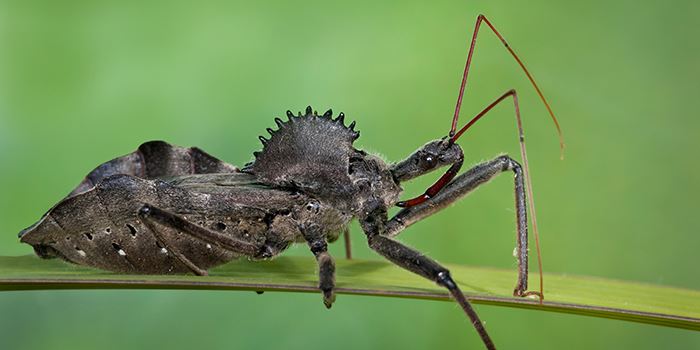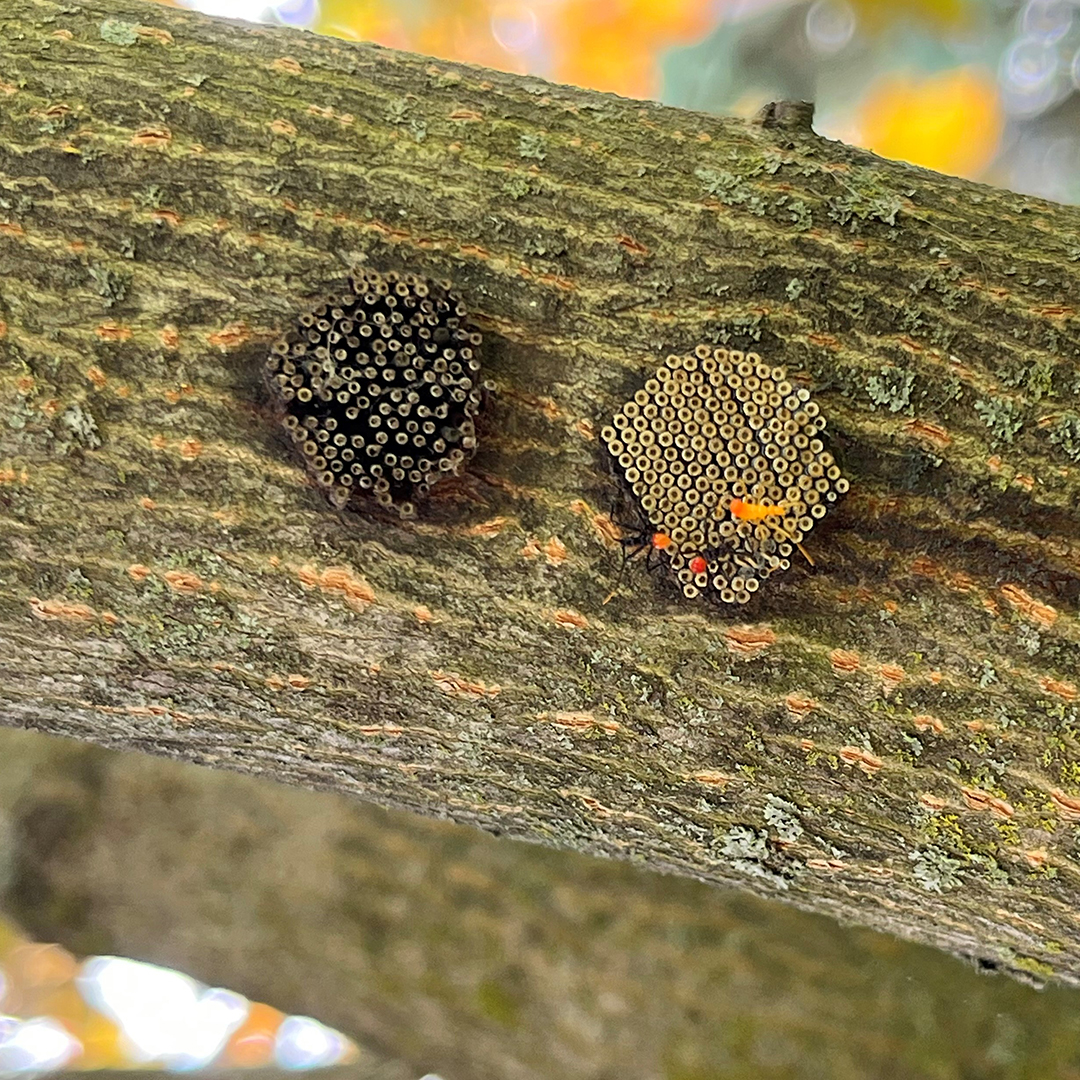Wheels in Motion

By Karen Menard
Aldo Leopold, also known as the Father of wildlife ecology and modern conservation, once said, “If the biota, in the course of aeons has built something we like but do not understand, then who but a fool would discard seemingly useless parts? To keep every cog and wheel is the first precaution of intelligent tinkering.”
When it comes to the number of insect species on earth, keep in mind that there have been over 900,000 species identified, while others are yet to be described to science. Insects could easily take credit for serving as many of our ecological “cogs and wheels” of the planet as they continue to provide valuable eco-services that benefit us all.
Native insects provide more than $4.5 billion in pest control, are food for wildlife that supports a $50 billion recreation industry, and they pollinate $3 billion in crops. (BioScience, Vol. 56, Issue 4, April 2006). For example, it is estimated that a Black-capped Chickadee will need 6,000-9,000 caterpillars to feed just one brood of nestlings each year. Multiply this number with the amount of other migratory and breeding birds that also depend on insects for continued survival. That’s a lot of insects making their way into a bird’s belly! These bugs, worth their weight in gold, ensure a birds’ long-term fitness level, making arduous migratory flights easier to accomplish.
As birds return each spring, the fanfare of birdwatchers will continue to follow the flocks and add millions of dollars to our local economy, as long as there are bugs.
Just as birds depend on the actual insects for food, we rely on insects to perform a special service called pollination to provide sustenance for us. Surprisingly, there are over 3,500 native bees in the United States that help increase crop yields (USDA.gov) and also pollinate native plants in our natural habitats. It is estimated that one in every three bites of food we eat exists due to the many types of pollinators (USDA.gov). So, the next time you take a bite of an apple or admire native wildflowers in bloom, thank a pollinator!

Additionally, many native insects serve another very important role as predators of other insects and mites, acting as valuable allies that keep insect pest populations in check to better protect the integrity of our natural habitats, as well as agriculture. Insects such as wasps, beetles, ladybugs, dragonflies, some species of flies, and assassin bugs are considered predatory and serve a great purpose within our ecosystems.
Pictured here is a type of predatory insect called a “wheel bug” (Arilus cristatus), which is actually a type of assassin bug. These bizarre, yet interesting looking creatures are not often seen and most known for their prominent, triceratops-like gear wheel located on their thorax. Their piercing proboscis can be compared to a hypodermic needle that injects a special substance to quickly immobilize prey, turning another bug’s insides into a liquefied stew.
The odd looking, clustered egg mass pictured here resembles a honeycomb of 40-200 eggs and produces orange young (also pictured, emerging). As nymphs, they help control pesky aphids and leaf miners both in neighborhood gardens and natural areas. As adults, their favorite food items include caterpillars, beetles and stinkbugs.
You could say in a sense that the wheel bug helps to keep the planet’s ecological “wheels” in motion, efficiently functioning in its job as a predatory insect within an ecosystem. It’s an example of just a small portion of the many insects that are connected within systems that in the end, produce ecological benefits to many in some capacity.
Sadly, keeping things well-oiled and moving in the right direction in this regard has, over time, proven to be challenging. Factors like habitat loss, pesticide use, climate change and disease have all contributed to declines in insect populations all over the world. For example, through butterfly data analysis in Ohio, a 33-percent reduction in the abundance of butterflies was observed over twenty-one years of extensive monitoring (Xerces Society). Bumble bees like the Rusty-patched (Bombus affinis) are currently listed as Federally endangered; other species are now in decline.
What can you do to help keep the ecological wheels turning and conserve insect populations? Even the smallest, postage stamp-sized backyard can make a big difference. 1. Transform part of your landscape with native plants. These species will best attract native beneficial insects. 2. Cut out toxic insecticides. 3. Educate yourself on the appropriate butterfly host plants and nectar plants (the insects use both differently) and offer the best, seasonal selections. 4. Plant shrubs and tree species that attract the most species of moths—remember, birds (and wheel bugs) love caterpillars. 5. Leave rotting stumps, dried plant stalks, tree snags and leaf piles (if possible) for insect habitat. Many solitary bees use plant stalks and tree snags for nesting areas.
Photos: Orange cogs and wheels (stock photo); wheel bug egg cases and nymphs (Madison Harding); Adult wheel bug (stock photo)
Did you know?
Wheel bugs can communicate by producing a clicking sound by rubbing the tip of their beak over the tiny ridges on the lower portion of their thorax.
